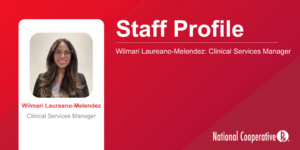How Plan Sponsors Can Save on Costs and Offer Value
Economic downturns are a natural part of business operations. The uncertainty of today’s economy has forced some business decision-makers to start thinking about ways they can save on expenses to avoid lay-offs and furloughed employees. One place employers turn to control costs is their employee benefits.
Employee benefits are a major expense for businesses. A growing slice of these costs is pharmacy. As plan sponsors, it’s difficult to maintain a quality benefits package, while maintaining low costs. However, it doesn’t always have to be that way.
Lower pharmacy benefit expenses can be achieved in many ways. Let’s explore a few:
- Self-Funded Employee Benefits
- Trusted Pharmacy Benefit Provider
- Education and Clinical Innovations
Self-Funded Employee Benefits
Controlling pharmacy benefit costs is possible for employer groups, trusts, Taft-Hartley plans and other plan sponsors. Managing these costs can be attained through solid plan strategies and clinical expertise. Self-funding pharmacy benefits is an opportunity to achieve this.
According to a report published by the Employee Benefit Research Institute, there are approximately 50 million employees and dependents that receive health care benefits through self-funded group plans sponsored by employers.
Being self-funded provides many options for plan sponsors to lower pharmacy benefit costs.
- Flexible Customized Benefit Plans: Each plan sponsor is unique, with very specific benefit needs. Having the flexibility of customized plan designs to fit each groups’ specifications helps make the best use of scarce resources.
- Eliminate Waste: Self-funded employee benefits offer plan sponsors the ability to pay only for costs incurred and not for the inflated expenses from a fully insured plan.
Recommendation:
Self-funding allows plan sponsors to focus on each area of cost rather than one bundled large expense item. This also allows for data to be shared resulting in plan sponsors knowing exactly where money is spent. Otherwise, plan sponsors are not able to see what’s driving their pharmacy benefit costs.
Trusted Pharmacy Benefits Provider
Managing pharmacy benefit costs can be overwhelming, but it doesn’t have to be. Developing a relationship with the provider can help plan sponsors more actively manage their costs and gain a deeper understanding of the complex pharmacy benefits world. Plan sponsors should be guided thoughtfully by their provider. Insist on complete awareness of each dollar of the plan’s pharmacy spend.
- Experts: Engage with a vendor you can rely on as a trusted partner. Enlist the help of your pharmacy benefits provider and capitalize on their knowledge to make recommendations to the plan. Regular data analysis and reporting of pharmacy expenses is necessary to manage costs, including quarterly or annual report meetings. Customer satisfaction should also be a high priority.
- Informed Participants: Plan sponsors that actively communicate and educate their participants allows them to better understand their overall health and make informed decisions. This results in better overall health outcomes.
- Transparency: Seeing through the many layers of a pharmacy benefits contract can be tricky. Work closely with your provider to know where the plan costs are incurred, how prescriptions are classified, and where plans can bring savings to their bottom line.
Recommendation:
Join a purchasing group. Being part of a purchasing group helps plan sponsors achieve contractual terms designed in the best interest of the group rather than the vendor. This yields the same buying power for large and small plan sponsors. Structurally, purchasing groups also have a history of being resilient in times of economic downturn purely based on their unique business model. When selecting a new provider, be sure that contract guarantees do not change based on utilization and that the plan has the flexibility to make plan changes that are beneficial to them.
Education and Clinical Innovations
Knowledge is power for plan sponsors. Having a base of information, and more importantly a resource network to ensure plan sponsors and participants are informed, is essential.
- Resource Materials: A front-line opportunity to help participants stay educated is to provide resource materials. For example, how-to instructions on mobile technology or briefs to bridge knowledge gaps about treatment plans. Videos, websites, electronic documents and pharmacy pipeline reports are all great resources for participants.
- Clinical Innovation: Plan sponsors must depend on more than pricing to lower pharmacy benefit costs. Comprehensive clinical programs help plan sponsors make informed decisions. Through innovation, savings opportunities become available.
Recommendation:
Consider working with a provider that prioritizes proactive approaches that benefit the plan sponsor and not the PBM. Make sure educational resources are available for both the sponsor and the participant.
The Root of Lower Pharmacy Benefit Costs Includes Providing Value
The real question surrounding saving on pharmacy benefit expenses during an economic downturn is how can plan sponsors deliver the most health value with their plan? The solution is simple: Become a self-funded plan sponsor and a member of a purchasing group. Develop deep relationships with the provider to have more connection to experts, participate education and financial transparency. Depend on clinical innovation and an educational information pipeline as a best practice for savings.
National CooperativeRx provides pharmacy benefits for self-funded member organizations. We are a not-for-profit cooperative, organized, owned and governed by our members. Contact us today for more information about how employer groups can lower pharmacy benefit expenses.




